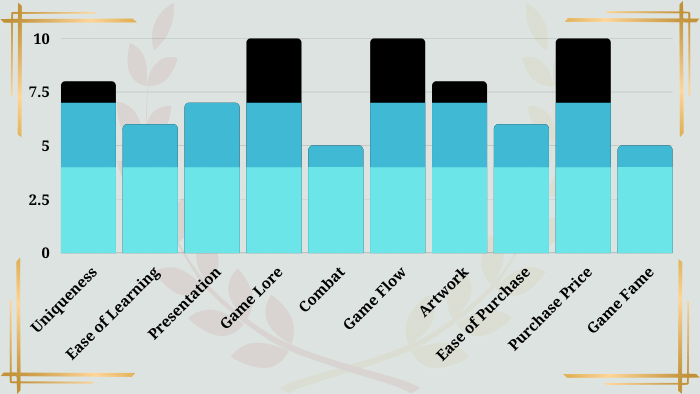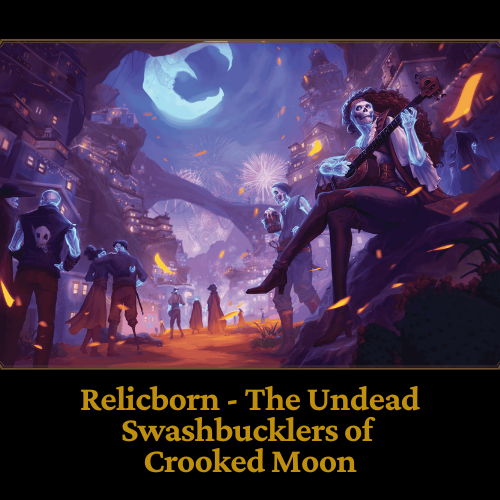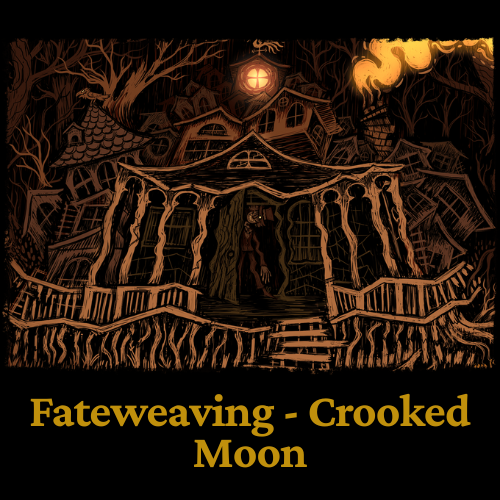Home > TTRPG Reviews
Vampire The Masquerade Review
This Vampire the Masquerade review is part of my “Best Tabletop RPGs of All Time” article. If you want to check out more TTRPGs and see how other top-tier tabletop RPGs are ranked, visit that page.
My Review – 75 / 100

If you didn’t know, Werewolf: the Apocalypse is also created by the same family of game designers and producers, as Vampire: The Masquerade. I mention this because both are great games with many followers, and rich worlds of lore. You’ll notice that Werewolf didn’t make the top list of best RPGs tabletop because of the two games, I simply believe Vampire to be the better.
Uniqueness of Vampire the Masquerade: (8/10)
Many play Vampire: The Masquerade (oftentimes, and henceforward in this post titled simply: Vampire) as a LARP (live-action roleplay game), instead of just as a tabletop RPG. The rules of the game fit both quite well. One of the most unique things about Vampire, and one of the things I love most about the game and culture is how much its audience has pushed the game forward in terms of both TTRPG mechanics and the roleplaying genre. I also love how diehard people who play Vampire can be about roleplaying their characters.
Vampire encourages players to roleplay at the deepest meaning of the word, and indeed, the Vampire crowd (on the whole) is one of roleplaying games’ most hardcore roleplaying groups.
Another unrelated aspect of Vampire gaming that I think is very unique is that character Experience in the game (Exp to gain level ups) basically just relates to your vampire’s age, experience, and maturity. It’s a nice idea, as it takes power away from simply killing enemies or completing quests. It makes sense that an immortal would gain power via their extending age, from immortality.
There are other LARP-style RPGs out there, and there are of course other Vampire-style games, but this one is pretty much the original, and probably does both better than most.
Ease of Learning the Game: (6/10)
There is a page in the Vampire rulebook that shows an overview for how to build a character. All the information you need in one place. Great, right? Well, not quite… The problem is that character creation requires more in-depth information than what is covered on the one character building page, and that information literally takes you all over the book.
I’ll be honest, you need to read at least parts of the entire 500+ page core rulebook to really create a fully-built character, in Vampire. Not good. That’s intimidating, even for me.
What I do like is that character creation in this game is more about roleplaying than stats, so you could possibly skip portions of character creation and still be fine. If you’re just gaming to roleplay, while largely ignoring stats, etc. I’d give this a high score. But to really play the game, in-full, getting started is just not an easy proposition.
Not that depth is bad. I actually think Vampire’s immense depth is part of what makes the game great, and part of what makes the roleplaying experience so rich. It’s just that the depth of the game hasn’t been tempered so well with an easy-to-learn process for new players.
Vampire the Masquerade Presentation: (7/10)
Vampire’s overall presentation is absolutely stellar. I love it. It’s dark, creepy, edgy, a little erotic, and everything you want and love about vampires. It certainly fits the mood, taking you to the game’s world. The game is inviting, and presented with great tact.
So, why doesn’t this section get a full 10/10? The main problem with Vampire, for me, comes back to the fact that the book is over 500 pages. I know. That may not seem like a great reason. But I just can’t bring myself to give a perfect score on presentation when I get bored going through another section that’s interesting to read, but doesn’t help me play the game now.
I’d describe Vampire the Masquerade in a way similar to other RPGs that almost got higher scores on this top TTRPGs of all time list in that the rulebook basically doubles as a novel. Or, at least a series of short stories. I like that there’s so much lore to the world (below), but I do think the game almost would’ve been better if 90% of the lore was moved to a separate “lore expansion,” or something similar. That way, the great information is still available to players, but in a way that’s not as distracting from the game’s core mechanics.
Vampire the Masquerade Lore: (10/10)
Ok, here’s the part that’s absolutely best about Vampire. This is the real reason you play this game.
In Vampire’s lore, becoming a vampire is a big deal for the entire vampire family, as it leads existing vampires to have more competition for food. So, someone must truly “fit” to be embraced into the fold. Every part of the game’s lore is then derived from that basic idea, which leads to rivalries, wars, espionage, and political maneuvering.
Characters’ overall view of life comes not only from the unliving eyes of a vampires, but the situation of immortals vying for power is made more dramatic because sometimes events are viewed primarily through a perspective of scarcity. There can be only so many vampires since there are only so many humans, and so much ability to remain undetected from the mortal population, at-large.
Vampire’s lore is goth-punk. It’s incredibly detailed and unique, even among the endless tomes of other vampire books, movies, and stories out there in the world. Vampire: The Masquerade does an excellent job of providing nearly limitless sources of inspiration for your LARP and tabletop games.
Combat in Vampire: (5/10)
One thing I really like about Vampire: The Masquerade is the use of small numbers both in character-building and combat. Character attribute scores, for example, are rated 1-5.
Simple enough.
Character attribute scores also line up with the vast amount of spells available in the game, making for very simple calculations when it comes to using special powers.
Similarly, each character level comes with a description of what a character of that level can be expected to be capable of doing. Ability scores also work the same way, along with knowledge scores, character backgrounds, virtues, willpower, etc.
Though the simplicity of numbers and descriptions in Vampire is great, I actually don’t enjoy the simplicity of the overall combat system, on the whole.
I like simple games, where things make sense rather intuitively, but Vampire is too simple for me. Combat is so simple that I wouldn’t enjoy doing it very often, which is a problem. You roll to hit, determine damage, and add in perhaps one of a few available combat maneuvers.
Vampire: The Masquerade is really not “about” combat, as a game. Combat is really just another means to tell the story of your vampire’s life, powers, and cunning. So, even though combat is too simple for my tastes, it still has a useful function in the game, and should not be a deterrent from anyone playing Vampire if you aren’t too into power gaming.
Vampire: The Masquerade Game “Flow”: (10/10)
Vampire the Masquerade actually states in the rulebook that players should limit dice rolling because it disrupts game flow. I wish more TTRPGs worked this way. Why roll for something that’s clearly critical to the story progressing? Unless there’s conflict involved, Vampire recommends for players to keep the story moving through roleplay alone, and either less, or no dice rolling.
I also like that when it comes to resolving conflicts of all kinds, if roleplaying alone is not sufficient for the situation, players simply roll one dice per point in their character’s associated attribute. This means that players never roll dozens of dice all at once (which can be fun, I’ll admit), and then have to spend time adding up their values (never fun for anyone).
To summarize, I would say that the flow of the game in Vampire is so great because the entire game is about roleplaying. There aren’t too many rules in Vampire to disrupt the flow of roleplaying. And even when there are mechanics and dice that come about during gameplay, as a necessity, they are kept to a minimum.
Vampire’s Artwork: (8/10)
Some of the artwork in the rulebook is incredible, and the images pop out. On the whole, the game comes with lots of very high-quality art. Furthermore, the art brings you into the game world very well. I’m a big fan.
I will say, however, that not all artwork in the book is equally engaging, and there are many lower-quality images further into the book than what you see at the very beginning.
It appears to me that perhaps there have been many artists who’ve contributed to the game over the years and Vampire’s many editions, which itself isn’t a bad thing. My main thought though it that the art does not have truly holistic or connected ideas, throughout. Instead, there are many ideas, themes, color schemes, etc. that though still good, are not entirely cohesive.
Ease of Purchase: (6/10)
Vampire can be found on Amazon, but if you don’t know anything about the game, it’s not really clear which book you should buy. The game can also be found on the World of Darkness website though, and can be purchased as a PDF.
Basically, it just takes a little more work with Vampire than with most games to find and purchase the right book for your gaming group.
Price & How Many Books Do You Need to Play: (10/10)
The PDF rulebook of Vampire is only $25. The price you pay for the value you get is insane.
I will say also that Vampire is just the type of game that if you’re going to play, you need to get the hardcover version. I don’t know why I say that, but it’s just how it is. There’s something about the game itself that requires a special place on your shelf between games, and a special place at the table, while playing.
Fame & Availability of Supplemental Material: (5/10)
Vampire is not super famous, surprisingly. The game and lore is really more of a cult following. If you’re at a large gaming convention such as GenCon, you’ll see Vampire. Otherwise, you may never hear about the game, as there aren’t a ton of tabletop groups playing this game.
If you decide that Vampire is for you though, there is some supplemental material for use in games. Of course, you can always additionally use any source of vampire inspiration out there, of which there is no end.
But overall, this may be a harder one to get people into since it’s not as well-known, and the rulebook isn’t exactly new person friendly.
Vampire: The Masquerade is Produced By






